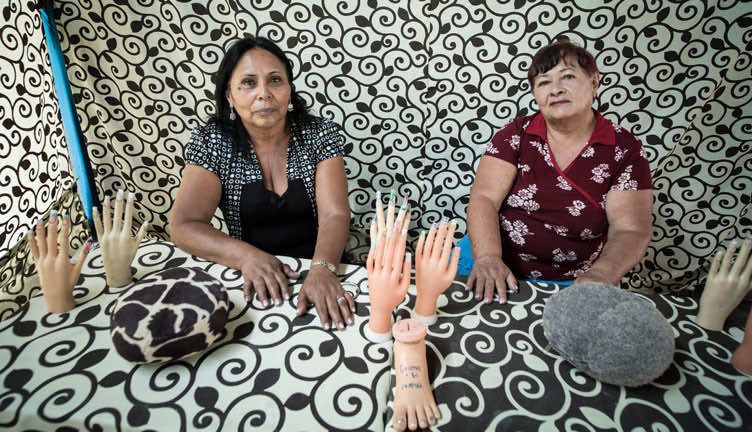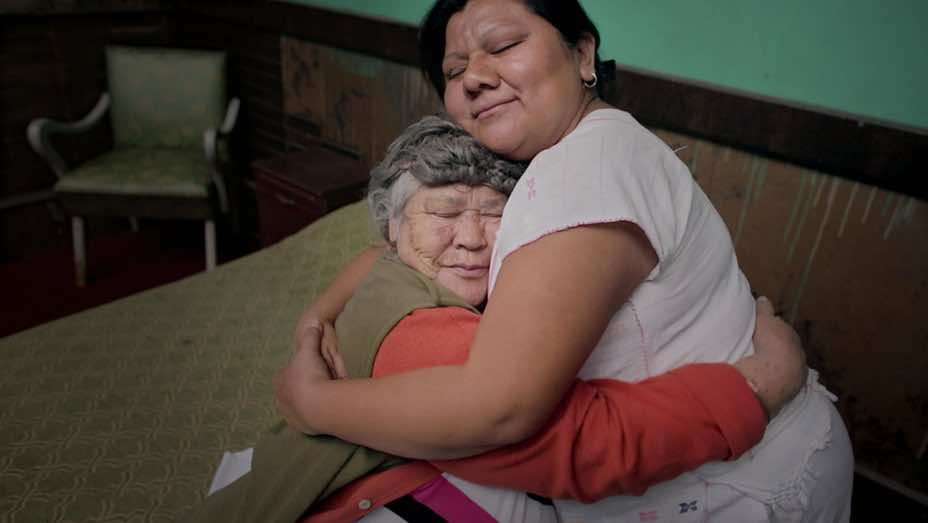
The new documentary Plaza de la Soledad is an artistic rumination on aging that presents interwoven stories of different low-income Mexican women who are in their golden years. Although the stories told by each of these women vary, what they all have in common is they are facing their later years as prostitutes. The documentary offers an unflinching and intimate examination of everyday life for these women who seldom have a voice and are often judged harshly.
Plaza de la Soledad is the first feature by photographer Maya Goded, who has an uncanny ability to show images that resonate because of their empathy. Unlike many of the films that showcase prostitution as a seedy endeavor that perhaps only appeals to those who are victims or worse, those who choose the profession and are regarded as deviants, Goded goes beyond stereotypical accounts and finds what lies beneath all these women. She has a shorthand with all her subjects that she developed during her 20-year career as a photographer, showing images that debunk myths about prostitution. In her documentary, Goded is able to go beyond by not only showing what these lives are like but also presenting the complexity in these women’s lives, their concerns about aging, their thoughts on sexuality and their beauty.

The general thesis of the documentary is that these women were somehow forced into prostitution either via very direct mechanisms of poverty and oppression or through the indirect psychological damage of being abused and not having the social support to overcome this stigma. Plaza de la Soledad is also a play on words, as the “plaza of solitude,” also references how, as we age, we end up more alone. It also refers to the informal name for where these women congregate and wait for clients: a plaza in a low-income neighborhood in downtown Mexico City. Although the film does not offer an overt social commentary on inequality or women’s rights, it is clear that as the camera lingers, the audience is drawn into this world of second-rate citizenship. Some of the women in the film give the impression that they have not even been heard until now. Yet they all have distinct voices and exercise them strongly.

Lest the subject and circumstances of this documentary lead its audience to a depressive state, Goded is able to come out on the other side by providing a more optimistic view of life. For the women who wander in the Plaza de la Soledad there are still bright spots and camaraderie. The interactions among them show that they are able to support each other in a way that nobody else ever could. There are still moments of redemption either working on their own spiritual life as a routine or with either each other as bouncing boards for advice and comfort. Most of the women are scarred by personal relationships that were severed or truncated because of violence, abuse or plain misunderstandings. As we witness the way they come to terms with life’s disappointments, there is hope yet for a future in which love is not wasted and happiness can be found, even in small gestures.
Plaza de la Soledad runs 85 minutes, it is in Spanish with English subtitles and it is not rated. We caught the film during the last installment of the AFI DOCS 2016 at the AFI Silver in Silver Spring, Maryland. Check other film festivals to see if its playing near you, as it does not have U.S. distribution.









